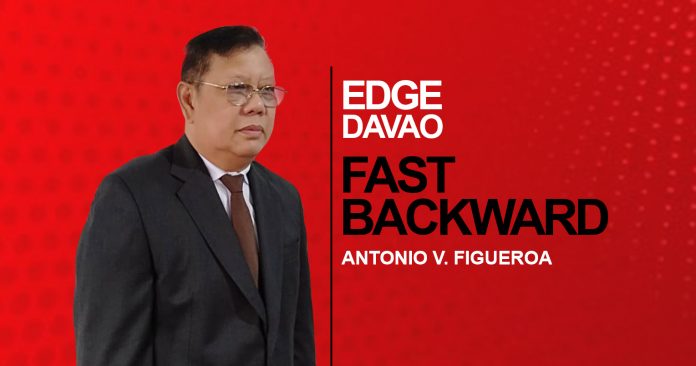Born in Binondo, Manila, on October 22, 1923, Ernesto I. Corcino, a newspaperman, historian, and farmer, has permanently earned recognition as one of Davao’s foremost historians who led the renaissance in the research of Davao’s past. He was a recipient of the USIS Honor Award for Outstanding Service in Cultural Exchange Program for his work as a historian.
His book, Davao History, was published in 1998 under the auspices of the local government of Davao City in time for the Philippine Independence Centennial.
Beyond history, Concino’s involvement in the defense of Davao against the Japanese Imperial Army is a little-known fact. When war broke out, he found himself ensconced along with Filipino guerrillas in the peripheral areas adjacent to the Davao Penal Colony. He was one of those guerrilla fighters who engaged the Japanese search party that hunted the ten escaping Americans and their two Filipino guides in April 1943.
Interviewed by John K. Lucaks for the book ‘Escape from Davao’ (2010), Corcino, fondly compared his compatriots in the guerrilla movement to the Minutemen, a reference to the U.S. paramilitary forces organized in New England during the American Revolutionary War. Like the Filipino guerrillas, the Minutemen were ‘trained in weaponry, tactics, and military strategies.’
As a twenty-five-year-old guerrillero, Corcino, ‘who would become an astute student of American history,’ participated in one of the significant bushwhacks that occurred in Kapalong, Davao del Norte, that year. Lukacs wrote:
“With the alarm, men from scattered farms and barrios dropped their tools, picked up their weapons, and gathered at dusk to lay an ambush near barrio Kinamayan—the deserted village where the escapees had eaten breakfast. Though heavily outgunned and outnumbered, sixteen to eighty-three by one account, they had the factor of surprise. Felling ten enemy soldiers with their first volley, they pulsed a shockwave of panic through the Japanese ranks.”
Thereafter, the guerrillas gathered the dead Japanese, nicknamed by the underground fighters as Nips (short for Nippongo), and tied them ‘on poles like pigs’ before running away.
Corcino noted that just before the escapees were secured, the guerrillas already observed them up in the lauan trees at sunrise soon before they commenced crossing the area north of the colony’s railroad. The guerrillas also observed an enemy tracking team several kilometers away.
Despite the gap between the two parties, Corcino related, the guerrillas were able to distinguish the ten tall white men braving the thickets as Americans while those trailing them were “Japanese soldiers with their identifiable hats with hanging strips of olive-green cloth.”
Years after the war, Corcino joined the United States Information Agency (USIA), later the United States Information Service (USIS), the largest full-service public relations organization in the world in Davao where he started gathering historical data and information about the region. He later became its head and stayed with the agency until his retirement.
Given his access to American books, magazines, and journals, Corcino became a valuable source of knowledge for historians, some of whom wrote war books that would become international bestsellers. Notable among them is Craig B. Smith, who penned ‘Counting the Days: POWs, Internees, and Stragglers of World War II in the Pacific’ (2012).
In 1997, Corcino was honored with the city’s highest recognition, the Datu Bago Award, “for his exemplary commitment to historical research about Davao through [an] assiduous, painstaking collection of historical/documented facts and photos, without alienating himself from community involvement as exemplified by his world in the fields of newspapering, information, civic action, and social services.”




